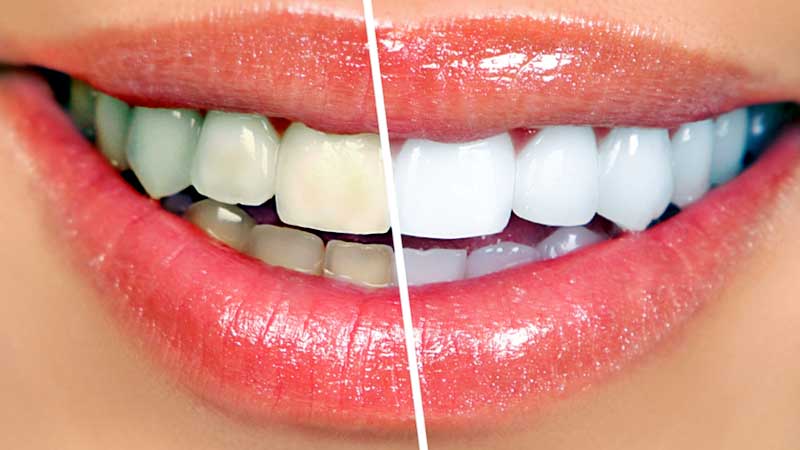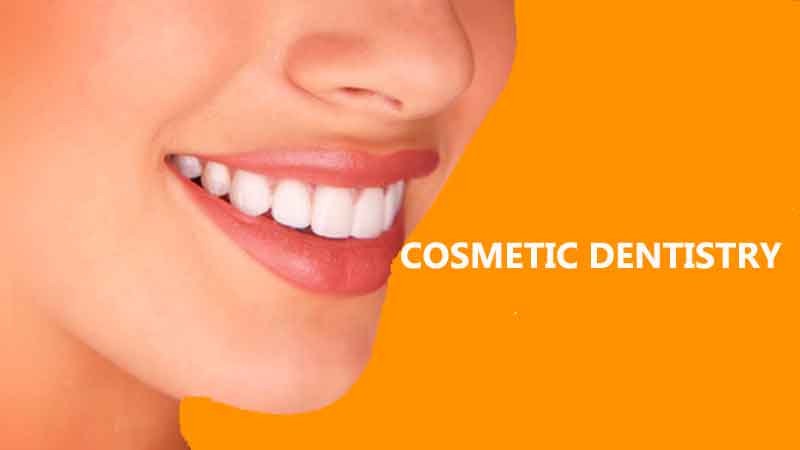
Many people consider white teeth to be an attractive feature of a smile. A child’s deciduous teeth are generally whiter than the adult teeth that follow. As a person ages, the adult teeth often become darker. This darkening is due to changes in the mineral structure of the tooth, as the enamel becomes less porous. Bacterial pigments, foodstuffs, Tetracycline like drugs, chemical contacts like Flourine, and tobacco can also stain teeth. As white teeth are subconsciously associated with youth, they have become desirable.
Tooth whitening also is known as Tooth bleaching is a bleaching process that lightens the discolouration of enamel and dentin. The procedure to bleach teeth uses oxidizing agents such as hydrogen peroxide or carbamide peroxide to lighten the shade of the tooth. The oxidizing agent penetrates the porosities in the rod-like crystal structure of the enamel and oxidizes interprismatic stain deposits; over a period of time, the dentine layer, lying underneath the enamel, is also bleached. Tooth bleaching will generally last from 2 to 5 years, with variations from factors such as cigarette smoking, and tea and coffee consumption.
Tooth Whitening Methods
There are two main methods of bleaching. The first involves applying a high concentration of oxidizing agent for a short period of time, which is the so-called office bleach. This produces quick results but risks chemical burns to the soft tissues. Therefore, most in-office bleaching procedures use a light-cured protective layer that is carefully painted on the gums and papilla (the tips of the gums between the teeth). The bleaching agent is either carbamide peroxide, which breaks down in the mouth to form hydrogen peroxide, or hydrogen peroxide itself. The bleaching gel typically contains up to 35% hydrogen peroxide equivalent.
The alternative method involves using a thin mouthguard or strip to hold a low concentration of oxidizing agent next to the teeth for as long as several hours a day for a period of 5 to 14 days. This is known as take-home or over-the-counter bleaching. This is a slower process but has fewer risks to the soft tissues. The bleaching agent is typically less than 10% hydrogen peroxide equivalent.
A typical course of bleaching can produce dramatic improvements in the cosmetic appearance of most stained teeth; however, some stains do not respond to bleaching. Tetracycline staining may require prolonged bleaching, as it takes longer for the bleach to reach the dentine layer. White-spot decalcifications may also be highlighted and become more noticeable. Bleaching is least effective if teeth have white spots, decay, or infected gums. It is also least effective when the original tooth color is grayish. Bleaching is most effective with yellow discolored teeth.
The Cost of Teeth Whitening Treatment
The teeth whitening cost differs on aspects like the oral health situation of an individual and the type of treatment selected.
Post-treatment guidelines
- Avoid any dark staining drinks like Tea, Coffee, Red Wine, fruit juice, and staining foods like soy sauce, red meat, chocolates, citrus fruits, etc within the first 24 hours of bleaching treatment.
- Strictly avoid smoking and also avoid coloured toothpaste and mouthwash for the first 24 hours.
- Brushing your teeth regularly and thoroughly.
- Using a fluoride toothpaste.
- Avoid sugary and stain-causing foods/drinks as much as possible.
- Going for regular checkups with your dentist.
Keep in mind that whitening results are not permanent, meaning that if you want to maintain your whitened smile, you’ll need to continue getting treatments as the effects wane.
